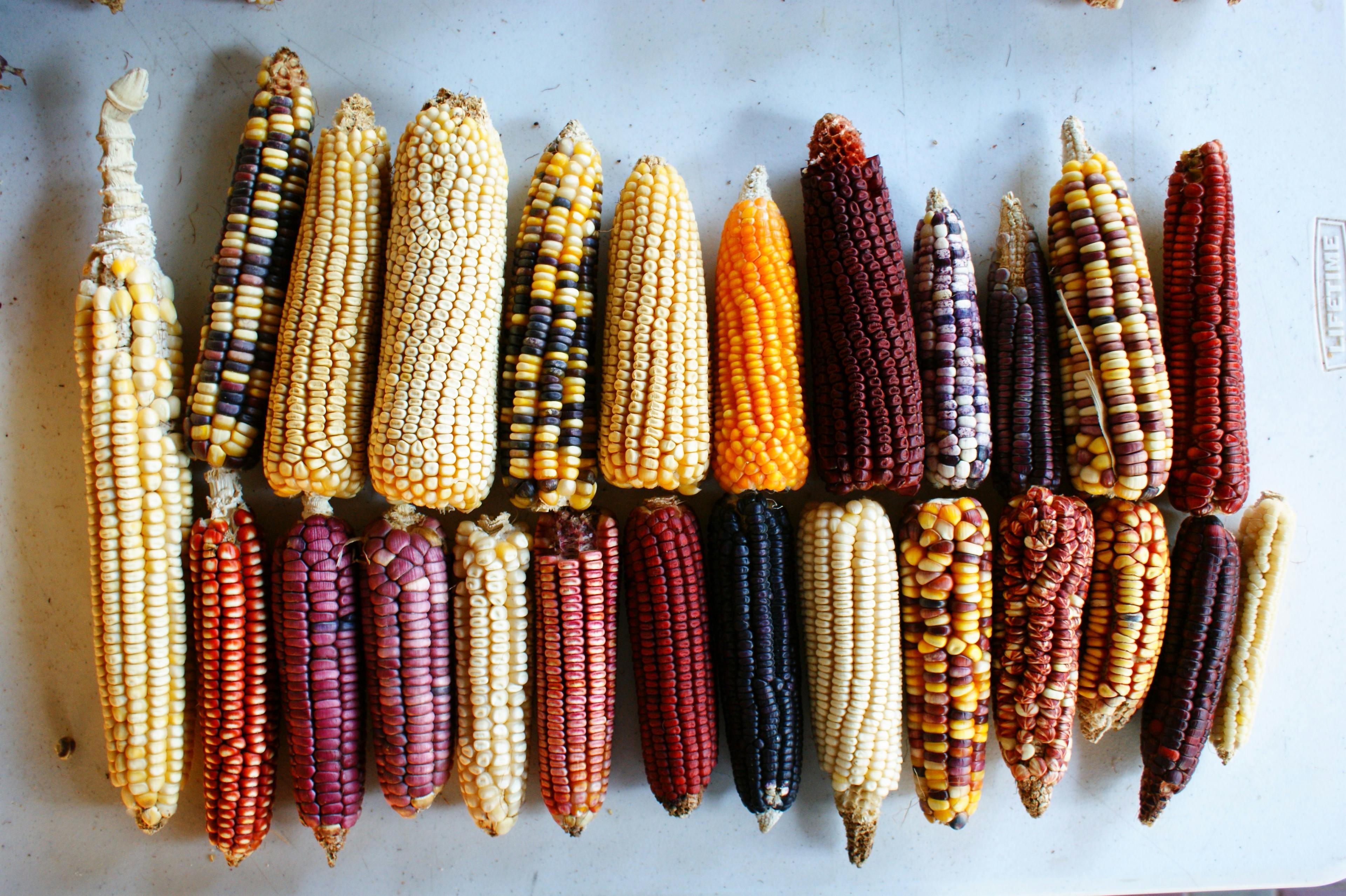This excerpt is taken from the chapter ‘Corn’ in
The Mind of Plants
Narratives of Vegetal Intelligence
Synergetic PressBook launchWebsite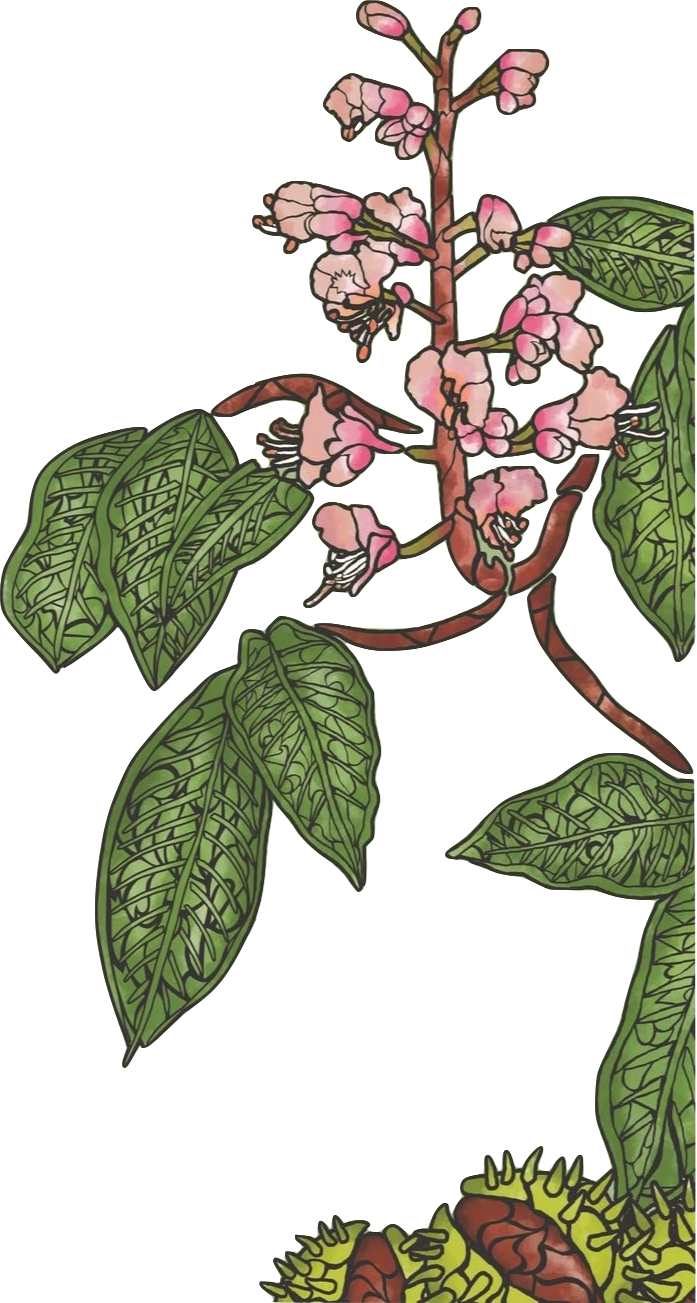
This article has has been translated from the Spanish by Steven F. White.
Now that time has almost placed fifty years on my back—and the world's population is feeling the shock of COVID-19, a novel virus that has un- leashed fear, sickness, isolation, and death—I have to say that my days are easier to bear if I reconnect with the little girl I was in a place where the cultivation of corn was a fundamental part of family life. It's as if the mind of this indispensable plant (that is part of my own Amerindian culture) was connected to mine by means of my memories. Corn is also what roots me.
It is April 2020, and the Santa Ana Farm that was founded in 1910 by my grandparents, Felipe and Paz, may they rest in peace, is recovering an air of happiness that I haven't felt since my childhood. The property now has come into my hands, and my son Camilo loves that land as much as I do. Over the last several years, he has dedicated his time to growing organic produce. It is grateful and fertile land. Every time I return to Nicaragua, the country where I was born, I visit the farm, my favourite place in the world, so I can plant more seeds of flowers that attract butterflies, hummingbirds, and bees. I love cooking with firewood on the stove, eating what the farm offers, and being there with my family and close friends. There, a joy shared by my brothers, sisters, and my mother, is reborn, and each of us tells engaging stories that come from this space, from other times.
In mid-May, when the cicadas began to sing, my Grandpa Felipe and the farmworkers climbed to the high fields to prepare the land. With their machetes, they eliminated the weeds that had sprung up with the first rains. Then the plow, hauled by oxen, broke the earth that would receive the grains their hands would release among the furrows and that their bare feet would then cover. Planting the corn resembled a dance of people advancing in a line on the horizon.
For me, seeing how the land became covered in green from the germination of each plant as its first pointed leaf emerged, was a huge annual event. That leaf always reminded me of an elongated ear whose first task was to listen to the different sounds of the world in which it had arrived. With that idea in mind, I was also convinced that each one of the little plants could hear me talk, scream, laugh, or sing in the same way that I was listening in that vast field to the birds, my Grandpa's whistling, or the jokes among the farmworkers. When the second leaf was born, it was as if the elongated ear received it with a strong embrace that lasted until the next day when they separated and remained in a position of two small arms moving steadily upward until they reached a certain height, that I would spend weeks anxiously awaiting. Every weekend, when I arrived from the city of León to the farm in Telica, I was dying to know how much the corn had grown in those infinite furrows that stretched farther than I could see. I always wanted to count the new arms they had grown.

The sound of wind in a field of corn
One day, when I ventured alone to the high fields without waiting for an older person to come with me, I had a terribly distressing experience when I first discovered how the plants in the furrows were thinned. In the same formation they had used to plant the corn, the workers now stooped low to uproot the smallest corn plants, or the ones that had still not learned how to embrace themselves or separate with open arms. I must have been six years old at the time, but I remember feeling paralyzed when I witnessed that chore that seemed so painful to me. I remember asking my Grandpa in an anguished voice:
"Why don't you leave them with the other ones?"
"If we don't get rid of them, the others won't grow well," he answered. "Why?" I asked.
"Because the biggest ones will give the best ears," he told me.
"And why not the little ones?" I insisted, as I watched the growing pile of elongated ears ripped from the earth and thrown between the furrows with no compassion whatsoever.
"If we leave the little ones, too, there will be lots of plants fighting for the same food, and the ones that are big now won't be able to grow anymore. And if they don't grow, what do you think will happen?" he asked.
"I don't know," I answered, even though I could guess that the answer was that there wouldn't be enough corn.
I went away truly annoyed, trying to calm down, consoling myself with the idea that the ones that remained would give the best ears.
That incident certainly didn't keep me from being happy and watching the corn grow.
My favourite moment, the one I always hoped would come soon, was when the stalks were a little taller than I was. Then I could run in between the rows, which was like traveling through cool tunnels. I can close my eyes now and still feel the playful way that the rough arms of each plant would caress my face. I would sing below them, convinced that they were listening to me because I could also intuit how happy they were to see me. Not all of them moved in the same way when they were touched by the wind. My heart could feel that the movements and sounds were louder in the row where I was running. When I would finally stop, covered with sweat and tired, I sensed a joy that I have rarely felt as an adult.
After the first rains, many wild plants seemed to appear from nowhere: the tangled vines of the red fruit passionflowers, the pink morning glories, or the tomatillos. All that sudden growth always intrigued me. Once, when I was helping my mother pick eggplants and squash, I had one of the most beautiful conversations a child my age could have about the birth of plants:
"How do the seeds know when they need to be born?" I asked her.
"All the seeds sleep in peace beneath the ground, but when the first thunder sounds, announcing the rain, the seeds wake up and go out, curious to find out who made all that noise," she replied. "And then the rain gets them wet. They like the rain and they're happy when they hear the people and especially the children go outside to take a bath in the rain, the way you do. The seeds stay up here, and their leaves and flowers grow so they can give us the gift of their fruit. The flowers live on the memories of the other plants that came before them. Flowers don't know death because they always leave their seeds to be awakened by thunder."
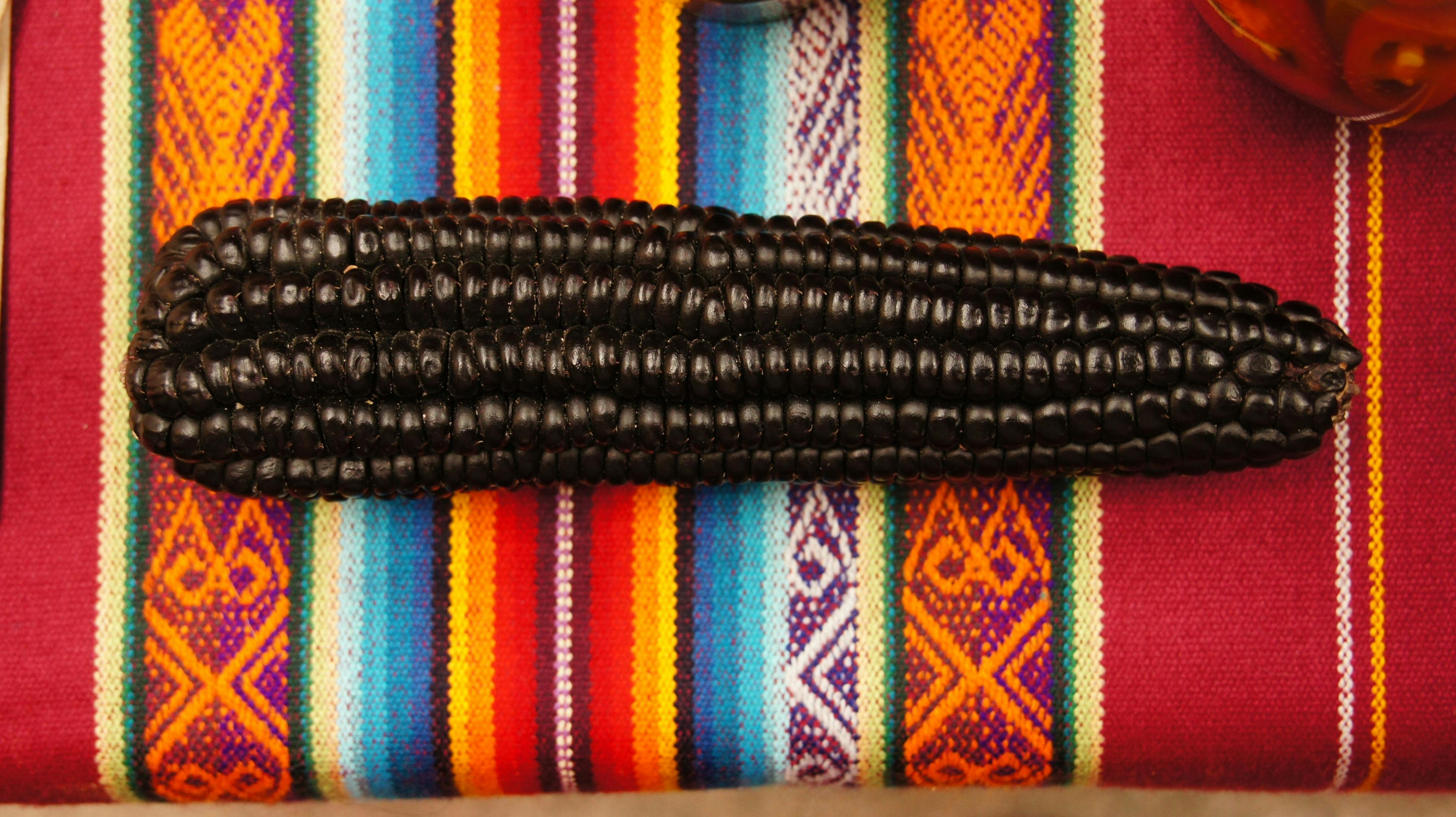
From that moment on, I've always felt that my mother's theory was right about how plants are born and communicate with us. In the hopes of never forgetting that idea, I wrote the poem "To Be Reborn" that reads,
Some people say flowers are born from their memories and live without thinking of death.
When the corn would begin to spike, a huge number of butterflies and bees would visit the fields. The little ears called chilotes appeared. These were used by my Grandma Paz in stews and soups as a delicious treat for my Grandpa and whichever grandchildren happened to be visiting. My mother also knew those recipes and prepared them for us whenever she could at our house in the city of León, which was about six miles away. She, too, had her own little farm which was a wedding present to her and my father from my grandparents. It was right next to Santa Ana Farm.
The arrival of the "tender corn" attracted birds such as the zanate (great-tailed grackle), pijul (groove-billed ani) and chocoyo (Pacific parakeet) that made a big racket as they stole grains of corn by using their beaks to peck through the husks that covered the small ears. It was also a party for all my cousins, aunts, and uncles when we all gathered together at Santa Ana Farm to share a delicious elotada, which consisted of preparing a wide variety of foods made from corn that my grandparents prepared for all their descendants. White, yellow, and purple corn was turned into hard atol (a dessert), güerilas, plain and filled tamales, as well as roasted and cooked ears of corn. It is difficult to translate some of this into English, but, believe me, it was all delicious. We would spend the entire day sharing different food and playing. The smallest among us had the job of taking turns grinding the grains of corn in a small hand mill. We all had our clothes and arms stained with corn juice as proof that we had been busy.
When it was time, my cousins and older siblings had the task of twisting the big ears of corn so that they were hanging upside down and could complete the process of drying. Then it would be August, and it was time for the harvest, or tapisca. This meant wrenching the ears free from the stalks complete with their husks, filling the sacks, and then emptying them into an ox-drawn cart that would take everything down to fill the enormous patio below with a multitude of ears of corn. These were days of hustle and bustle, and lots of people came to work. Women and children would husk the corn and place the biggest ears to one side. The rest were carried off in leather containers to storage areas called trojas, which were square repositories like silos and were made of the long hard stems of wild sunflowers bound together, and located in places that would be in direct sunlight. My Grandpa selected the best grains of corn from the biggest ears and reserved them for the next year's dance of the planting.
A machine to shell the corn would then arrive on the farm. My uncles used to say that it was better to hire that apparatus with its noisy engine than to have to transport all the corn from the trojas to a shelling machine in the city and then to load and unload the corn in 100-pound sacks. This work went on all day and throughout nights filled with visiting fireflies. From the area known as Pueblo Redondo, where Santa Ana Farm is located, many people would arrive to watch the machine do its work, as if it were some great yearly spectacle that no one would think of missing. Parents would bring their children. It was so much fun to play, sliding down the mountains of shelled ears of corn, with the corn fluff resembling the snowflakes that I had only seen in crystal balls at Christmas. Now that I live part of the year in upstate New York and I am familiar with real winters and interminable snow, I can attest to the fact that my comparison made a certain sense since the fluff that came shooting through a tube caused white whirlpools in the air, like a North Country snowstorm. The fluff left all of us children scratching ourselves for hours with an allergic reaction. It seemed like it was deeply under our skin, sort of like the cold from what seemed to be inoffensive snow that would penetrate my body to the bone.
There were always some ears left over with some grains of corn that the machine wasn't able to shell. They looked like the sparse teeth in a beggar's mouth. These ears were set aside by certain women who shelled them with the points of old dull knives, or perhaps another ear of corn. They gathered up the grains and returned to their homes with a good amount of corn obtained this way. When the shelling machine would finish its work, the women and some young boys continued to look for more rebellious grains of corn among the mountain of shelled ears.
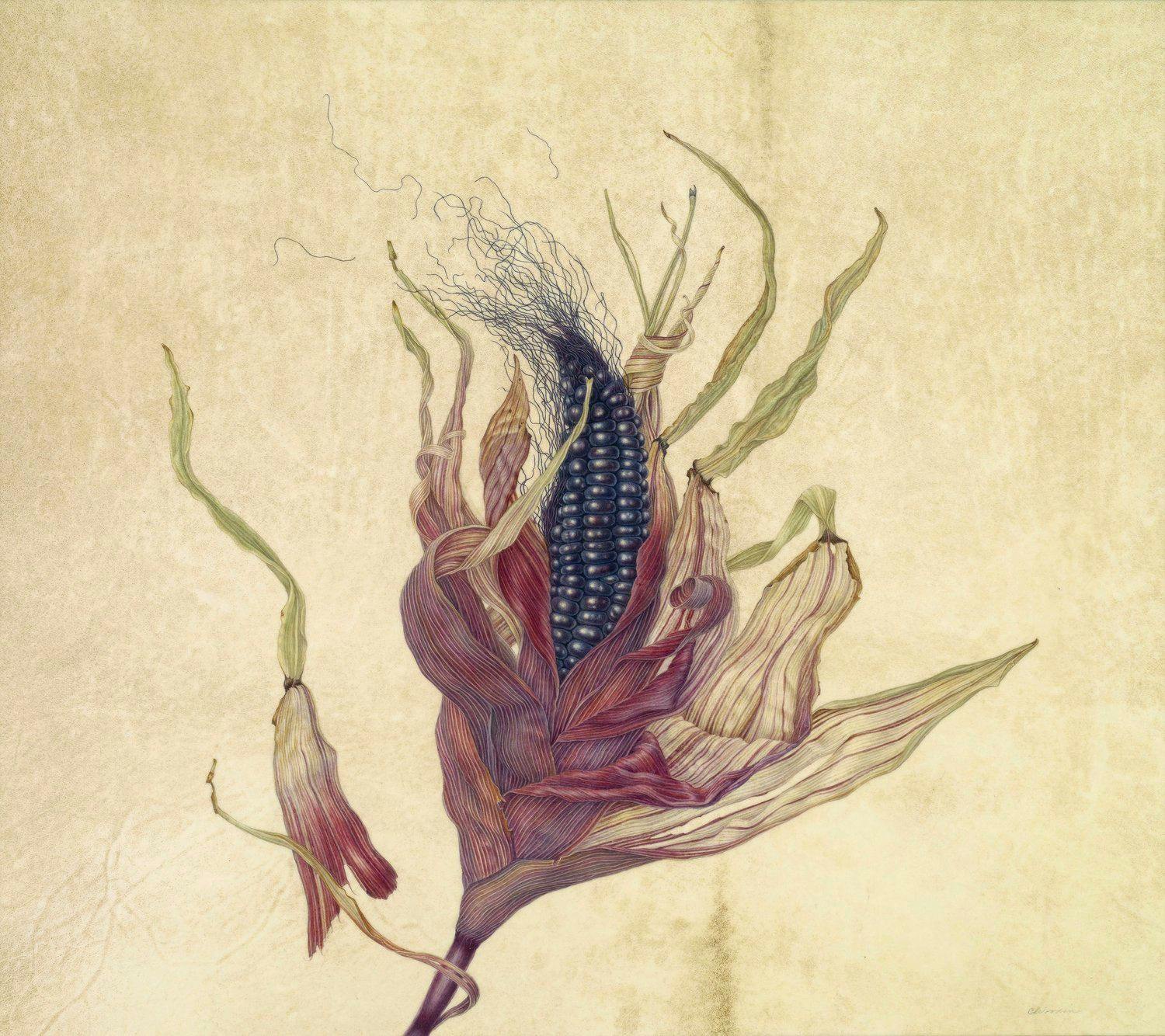
The cycle, from sowing to harvest, lasted three–four months. The last activity was a lunch for all the farmworkers and their wives that was normally held on a Saturday. For the meal, several hens were sacrificed, and my Grandma Paz made soup from them in a huge pot, adding a variety of vegetables such as plantains, yucca, different kinds of squash, cabbage, and taro. She also made balls of corn meal seasoned with ground annatto, salt, garlic, onions, green peppers, mint, and the juice of bitter oranges.
Of course, one thing that absolutely had to be a part of the celebration was the chicha bruja, or "witches' brew," which my Grandma would make at least two months before the big meal with grains of corn from the previous year's harvest. Chicha bruja is an intoxicating drink that is made by fermenting lots of corn in a ceramic vessel buried in the earth, but with the neck and the opening above ground. She added water and some blocks of dark sugarcane sweetener, some cloves, some cinnamon, and then put a top on the vessel. When the grains of corn began to dance among each other in the vessel, it was as if they themselves were drunk, and it was then that the grain (called a puyón at this point) began to sprout. The mixture had to be stirred each week and the vessel covered each time. The chicha bruja was now sweet and sour and had its alcoholic content as well as a certain fragrance from the two spices that had been added to the mix at the beginning of the process. The day of the big lunch, the workers had their gourd cups filled with the eagerly awaited chicha bruja. They ate, sang, and drank beneath the mango and calabash trees near the well and the watering troughs. They drank as much as their bodies could bear. Some of the workers filled their gourds more than a few times.
The next morning, it was funny to watch and listen to my Grandma stroll around the house as she scolded the workers who were still sleeping, sprawled in the patio as a consequence of their drunken night that made it impossible for them to find their way home, much less mount the horses that were still tied to the fence, patiently awaiting their owners. All my Grandpa would do is laugh, as he sat on his wood and leather chair, drinking his coffee before walking to Sunday Mass with my Grandma. From a distance, I would hear him say in a joking, ironic tone, "Whose idea was it, anyway, to give all these men chicha bruja?"
And when the workers finally were back on the job, they would tease each other and make fun of all the imprudent and crazy things that were said under the effects of the chicha bruja. As they went from joke to joke, they climbed to the high fields to uproot the dry stalks of corn that remained and then to prepare the earth for planting beans. On terraces that held more water when the rains became torrential, they planted ayote squash. After the beans were harvested, what remained of the plants was burned and the earth was left to rest until the thunder once again announced the first rains of May.
Meanwhile, I had to keep up my hopes until the next cycle of planting and harvest, when I could enter the cool tunnels again, play among the furrows, sing to the corn, and be touched by its rough leaves. I longed for the elotada, that banquet of foods made from corn that helped us all get to know each other, and work together as a family to make meals for everyone.
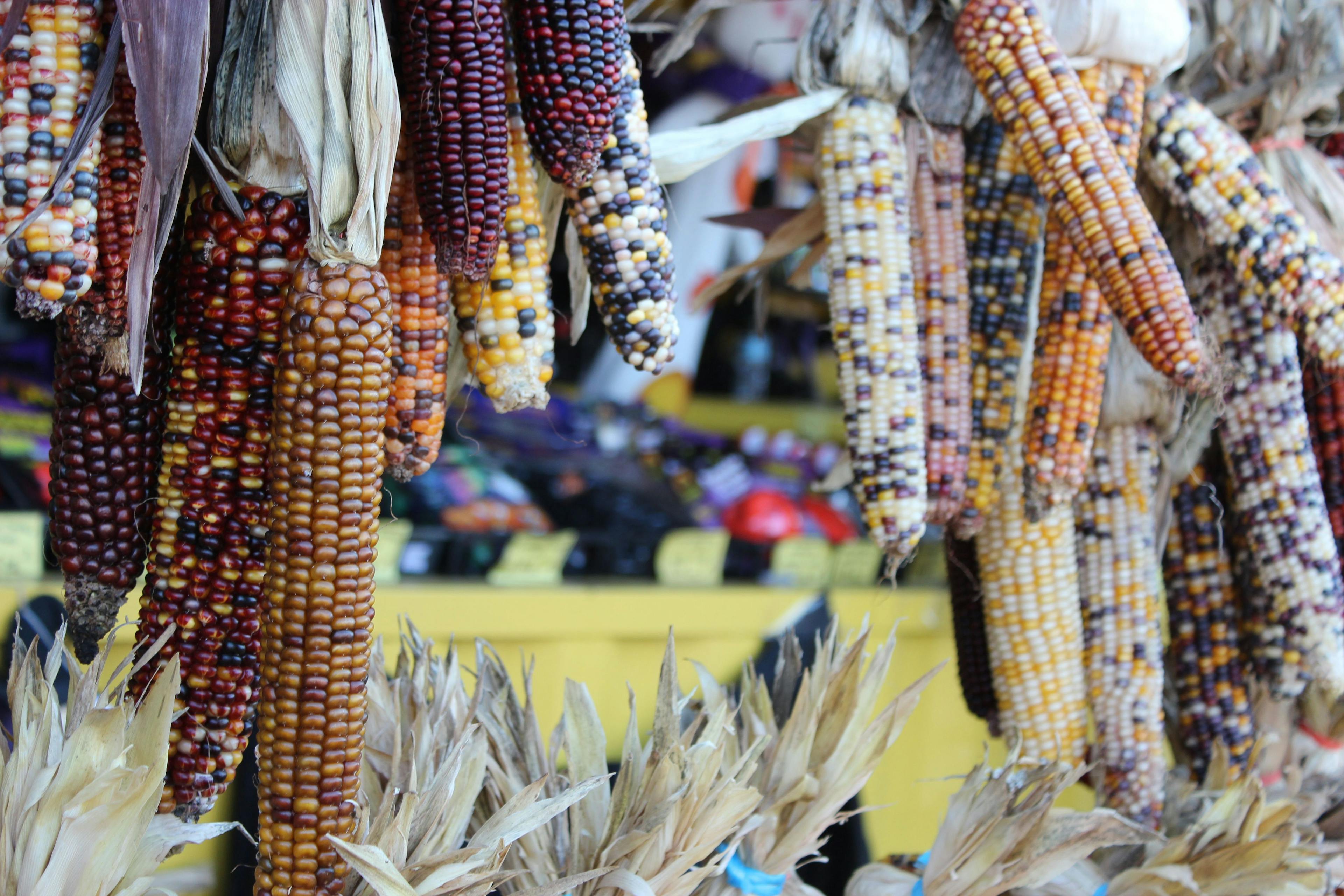
Wherever I am, not too much time can go by before I need to have some corn tortillas on my table. What I mean is that my body, my organ- ism, can't be without tortillas or something with corn in it for more than a week. When I was a little girl, I learned to shape tortillas with my hands. Whether it was on my mother's small farm or on the farm of my grand- parents, there would always be a space for me in the kitchen with my ball of dough and room on the hot comal to place my small circles made by the rhythm of my palms, striking the dough and creating a round, flat shape. The process has its own musicality, depending on how each person develops it, the way the ball of dough is struck and stretched on top of a plastic circle. The dough comes from grinding corn which has been previously nixquezado. The nixqueza is a process of cooking the dried, hard grains of corn. In a big pot of water, one adds a little cal (lime, an alkaline powder) and ceniza (ash), and then the corn, stirring all the while. When the corn begins to release an outer layer of its skin, then it's time to take the embers from the fire, or remove the pot. My Grandma would pour the contents of the pot onto the molendero (grinding stone) in her kitchen and let it cool there for a while. Then, she placed the corn in a large receptacle, rubbing it together to loosen an outer layer on the grains. When the water in which the corn was soaking poured off clean, it was time to grind it. Also, it was the moment to put the comal (ceramic griddle) on the fire and then one kneaded the dough until it had a soft texture so that it could be stretched without cracking or breaking. It had to be dropped carefully on the hot comal. When the side that was up started to dry it needed to be flipped for the first time. After a while of being on that side, the tortilla needed to be flipped again, and that was when it made the announcement that it was ready: it's called the empollado, which is when the tortilla separates and puffs up like a blister, or like a hen when she's sitting on her eggs. The tortilla is then lifted off and wrapped in a piece of cloth, ready to be enjoyed with beans, guacamole, stews, cheeses, and meat prepared in different ways.
The corn I describe here as part of my childhood is so important for what it is, but also for what isn't, namely, GMO corn. I've learned as an adult that biotechnology companies such as Bayer, BASF, Dow AgroScience, DuPont Pioneer, Monsanto, and Syngenta market GMO seed and related products, including herbicides. The recent merger—worth $66 billion—of Bayer and Monsanto enabled Bayer to drop the Monsanto name due to the negative publicity surrounding this company that is one of the most hated businesses in the United States. The genetically-engineered seed that is praised by some as hardier, more nutritious, and more drought- and pest-resistant than non-GMO corn, nevertheless, raises many serious questions. Are there potential health concerns when scientists change the structure of corn in ways that would not occur through natural development, infusing it with animal DNA, herbicides, and pesticides? Will the global predominance of GMO corn make farmers from the developing world dependent on international seed companies with exclusive patents on these genetically-modified organisms? Will genetically-engineered genes introduced in wild plants ultimately cause a reduction in biodiversity? Could GMO corn influence public health in terms of antibiotic-resistant bacteria? Could changes in the pollen of GMO corn affect the development of non-GMO corn through unintended cross-pollination? These and other potentially consequential issues certainly merit further research.
In my everyday life, corn represents a point of departure and a return to the images of my ancestors. It is as significant as my umbilical cord and my brothers' and sisters' that my mother buried with the placentas on the land of her small farm. She decided this place was where her eight children would be born with the assistance of a midwife named Margarita. I was the youngest. She returned the placentas and umbilical cords (that joined us to her like a root that nourished us) to the land in order to nourish us from a greater mother. My mother planted me like a grain of corn, loving the spaces I came to know while I was in her womb. Strangely, all my siblings have an enormous attachment to our point of departure. Each one of us has a piece of land in that place. I had the good fortune of becoming, over time, the owner of Santa Ana Farm. It is a measureless gift from my grandparents' spirit and from the millions of open arms that received me during my unrepeatable childhood, and that I hope will protect me during this pandemic provoked by a human plague.
